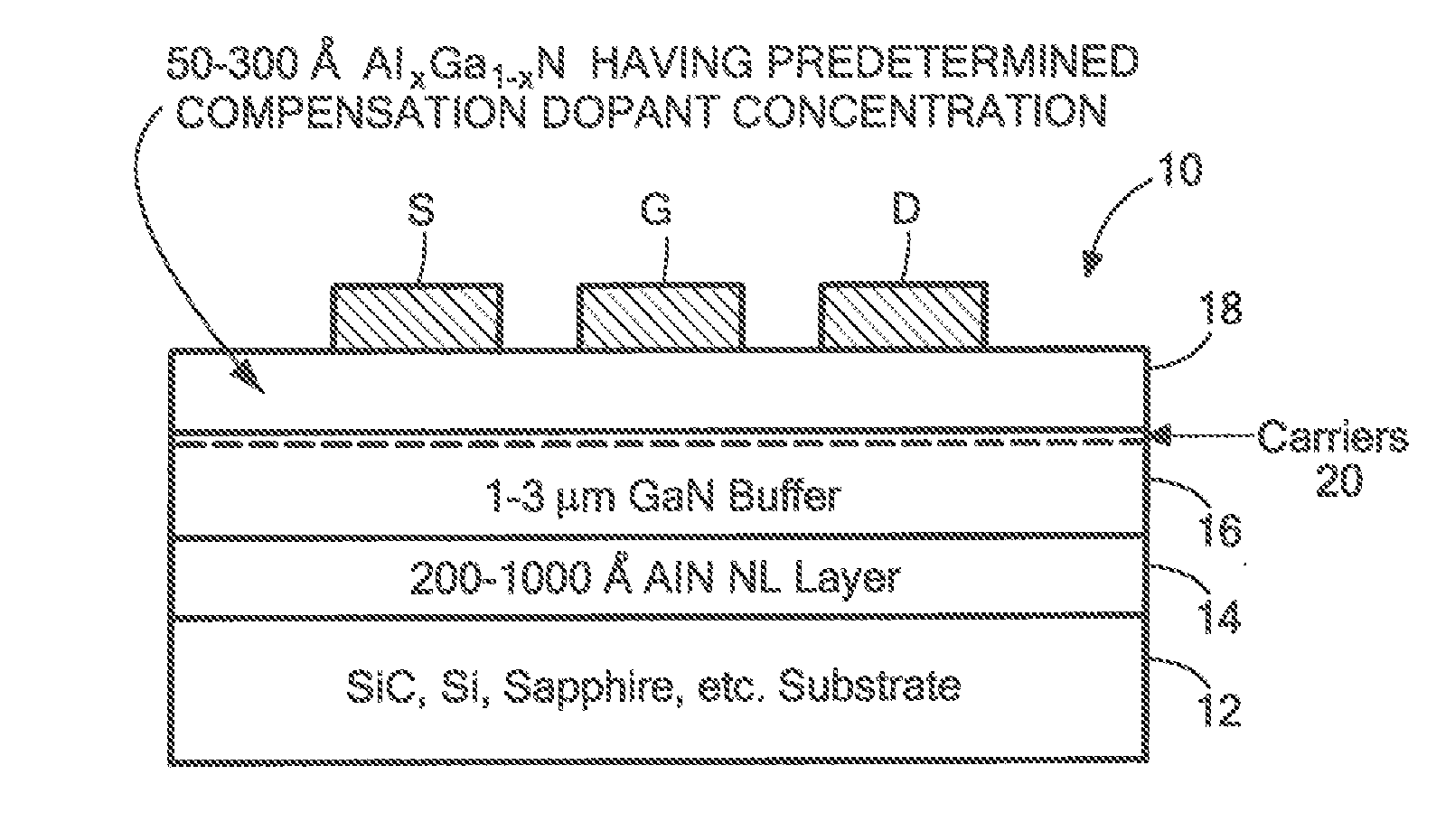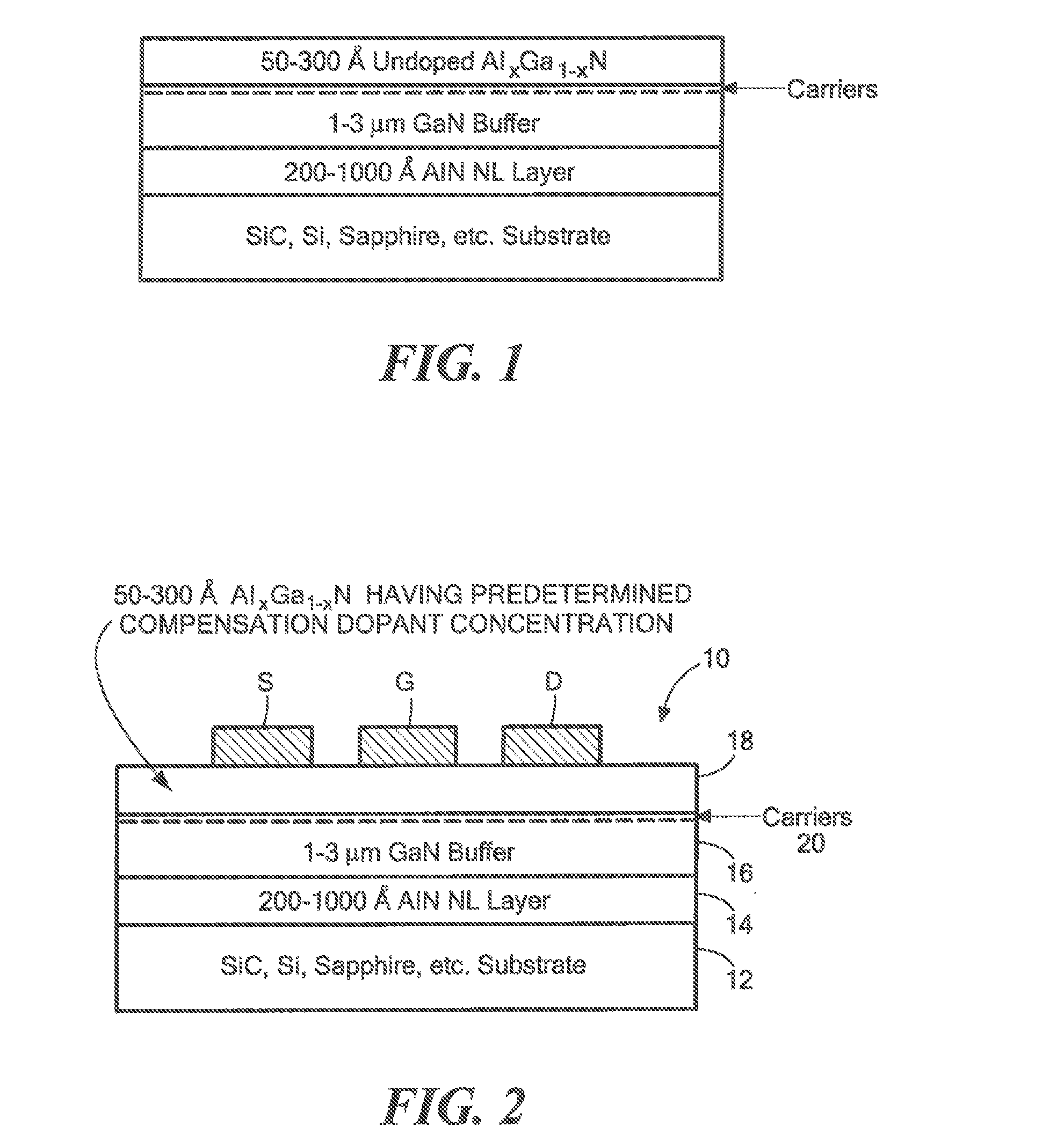Polarization effect carrier generating device structures having compensation doping to reduce leakage current
a carrier generation and polarization effect technology, applied in the field of semiconductor structures, can solve the problems of increasing the leakage current of the device, insufficient thermal energy to create any significant number of electron or hole carriers, and device leakage current, so as to reduce the leakage current, and reduce the resistance of the compensation doped algan layer
- Summary
- Abstract
- Description
- Claims
- Application Information
AI Technical Summary
Benefits of technology
Problems solved by technology
Method used
Image
Examples
Embodiment Construction
[0032]Referring now to FIG. 2, a HEMT device 10 is shown having a substrate 12, for example, silicon carbide (SiC), silicon (Si) or Sapphire, has a 200 Angstrom to 1000 Angstrom thick, nucleation layer (NL) 14 of Aluminum Nitride (AlN) formed on substrate 12 and a 1-3 micron thick III-V semiconductor buffer layer 16 of here, for example, GaN formed on the AlN layer 14. A 50-300 Angstrom thick layer 18 of here carbon-doped Aluminum Gallium Nitride (AlxGa1-xN) barrier is under tensile, elastic strain on the GaN buffer layer 16 thereby causing piezoelectric polarization charge 20 to form in the top-most portion of the GaN layer 16. Also at the AlGaN / GaN interface, the difference in the spontaneous polarization of these two materials results in additional polarization charge 20 in the top-most portion of the GaN layer 16.
[0033]It should also be noted that during the formation of the AlxGa1-xN barrier layer there may be contaminants having energy levels outside of 10 kT from the valance ...
PUM
 Login to View More
Login to View More Abstract
Description
Claims
Application Information
 Login to View More
Login to View More - R&D
- Intellectual Property
- Life Sciences
- Materials
- Tech Scout
- Unparalleled Data Quality
- Higher Quality Content
- 60% Fewer Hallucinations
Browse by: Latest US Patents, China's latest patents, Technical Efficacy Thesaurus, Application Domain, Technology Topic, Popular Technical Reports.
© 2025 PatSnap. All rights reserved.Legal|Privacy policy|Modern Slavery Act Transparency Statement|Sitemap|About US| Contact US: help@patsnap.com



